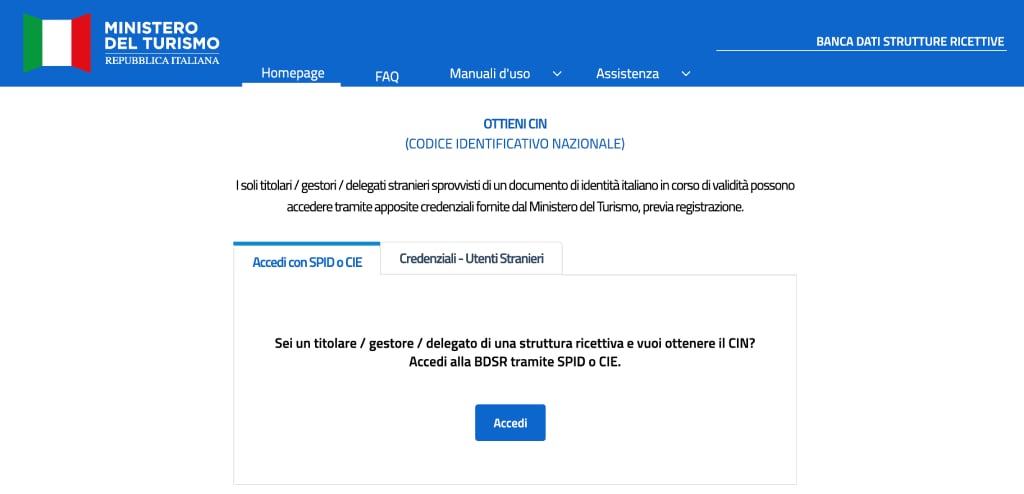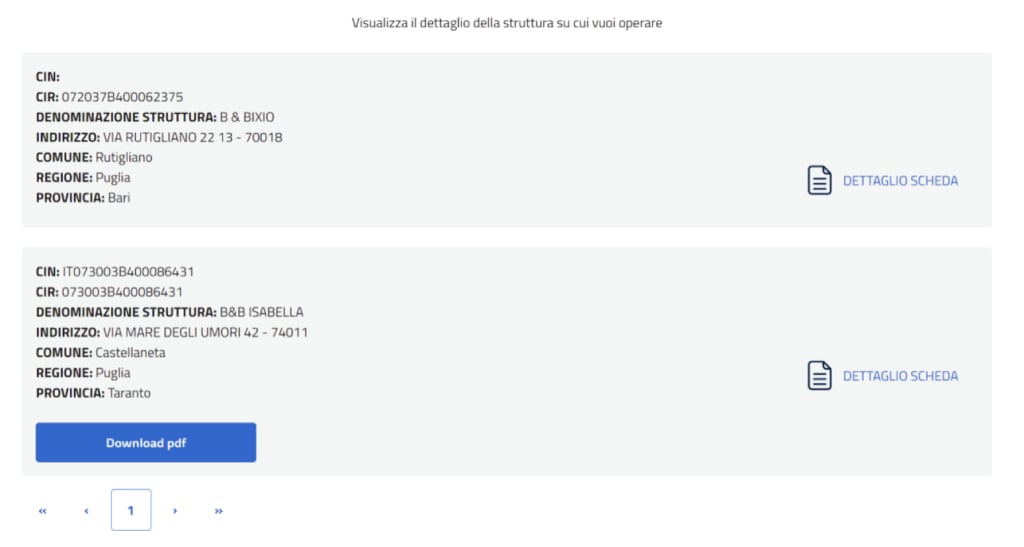Ever since the first schemes took off in 2019, one-euro home offers have sparked the interest of potential buyers from abroad looking for a slice of authentic Italian life.
The programs were initially launched by rural Italian towns and villages whose populations had dwindled, though in 2020 Taranto became the first (and so far only) Italian city to offer one-euro homes in its historic centre.
READ ALSO: Is Italy’s one-euro homes frenzy coming to an end?
Whilst the final purchase price of these homes usually amounts to a lot more than one euro, many buyers say the properties are still a bargain and that they allow for integration into parts of Italy that would otherwise be unknown.
Some potential buyers though say they have been put off by the amount of paperwork and regulations and the cost of renovations involved.
Whatever the opinion, the concept seems to be here to stay: the town of Ripacandida in the Basilicata region was the latest addition earlier this year to the list of towns offering one-euro homes.
With some offers expiring and the terms and conditions varying by town, it can be hard to keep up with the options.
We’ve looked at the offers available at the moment and selected some of the most interesting ones, which you can find listed below.
Ripacandida, Basilicata
In the province of Potenza, this village of just 1,767 residents is perched atop a cliff overlooking a picturesque, hilly region.
Heavy emigration to the USA at the end of the 19th century played a huge role in the village’s depopulation, and the local authority has now begun selling off abandoned homes in a bid to attract new residents.
Local monuments include the church of Santa Maria del Sepulcro and the San Donato sanctuary, and like many other one-euro home sites, the village suits people who are looking for a laid-back lifestyle.
The eight properties for sale so far appear to be small – around 30 square metres each – and it’s not clear from the information online what sort of condition they are in.
To find out more, see the comune’s website.
Patrica, Lazio
Just 70 kilometres from Rome, this hilltop village in Lazio has a population of 3,176.
The mayor of the village filmed a video appeal back in 2017 saying “Come to us”. Throughout the video he highlighted the positives of living in Patrica saying the town was full of history and beauty.
The two homes currently listed on the comune’s website appear to be in a poor state of repair, but the proximity to the capital and scenic location could make this a worthwhile investment for some.
Pietramelara, Campania
Only 50 kilometres from Naples and 25 kilometres from Caserta, it’s little surprise that this town in Campania has had quite a few requests for one-euro homes. It received 200 applications within six months when it launched its first one-euro homes project in 2021.
As elsewhere, the homes available in this town require renovations. However, it is a pretty popular spot and one-euro homes tend to go quickly.
If you’re too late, don’t despair; apartments here are sold for as little as €65,000 according to online housing portal Idealista.
To find out more, see the comune’s website.
READ ALSO:
- ‘We bought the cheapest house in Piedmont and live mortgage free’
- The ups and downs of buying a property for retirement in an Italian hilltop town
- Why Italians aren’t snatching up their country’s one-euro homes
Triora, Liguria
Right on the border with France this place is perfect for those looking for an Italian lifestyle whilst being connected to the rest of mainland Europe.
It perhaps has the lowest population on this list with only 416 inhabitants, so it is ideal for those who like living remotely.
Due to its location, the town is steeped in history. It used to belong to France, and was labelled ‘the granary of the Republic of Genoa’ before Italy’s unification.
To find out more, see the comune’s website
Leonforte, Sicily
The Sicilian village of Leonforte put cheap homes on the market in its historic Baroque centre in 2022.
In the central province of Enna, this old town is host to a mix of cultural and natural attractions, which the local municipality wants to repopulate to preserve its social and economic future.
Leonforte says its one-euro home project provides for the redevelopment of urban areas, intended to attract families, tourism and businesses.
If you want to find out more and apply for a bargain Sicilian bolthole, see this website.
Pratola Peligna, Abruzzo
Just half an hour from the ski resort of Roccaraso and the same distance from the coastal town of Pescara is this small and charming municipality, in the province of l’Aquila.
A small area with some 7250 inhabitants, there’s a lot of uninhabited space, so authorities are hoping to lure newcomers with some enticing real estate deals.
The town launched the scheme in 2021 after finding that some 40 percent of homes in the area were abandoned and in many cases the owners couldn’t be traced. Some were still listed under the names of people born in the 1890s.
To reinvigorate the town, they decided to offer these properties at a sale price of one euro.
To see the houses currently on sale, check the municipality’s website.
Bivona, Sicily
A small town deep in the heart of Sicily, the local authorities want to enhance and recover the town’s neglected and abandoned buildings.
As in the other Italian towns and villages offering properties for next to nothing, Bivona’s young people have left in search of work elsewhere, leaving the area depopulated and in danger of becoming a ghost town.
OPINION: Bargain homes and fewer crowds – but Italy’s deep south is not for everyone
The Sicilian town, which has just 3,800 residents, offers its one-euro scheme with an added bonus.
To beat the competition from other towns offering the same deal, Bivona is easing buying restrictions and offering tax bonuses for those who buy one of a dozen empty and dilapidated properties in the town.
More information about the properties available and the buying requirements is available, partly in English, here.
The terms and conditions buyers must agree to include paying a €2,500 deposit and declaring their intended use of the property, which can be anything from a family home to a holiday rental property, or even a craft workshop.
In the case of competing offers, you’ll get more points if you intend to speed up the restoration project and if you use renewable materials.
Bisaccia, Campania
This town is hoping to attract families and groups of friends to buy a couple of bargain properties between them.
The picturesque town of Bisaccia, in an inland part of Italy’s southern Campania region, started to put dilapidated buildings on the market for a euro in 2021 in hopes of reviving the community.
But unlike other towns offering such deals for people committing to renovations, Bisaccia’s officials say its tightly-clustered buildings would suit more communal projects. Find out more on the official website listing the bargain homes.
There are still many other places in Italy where you can find one-euro homes, with the majority being in Sicily. Take a look at the interactive map below for 2023.
Some towns instead offer homes at €2, including Sambuca, the small Sicilian town which says it made €100 million in two years after becoming one of the first – and most successful – places to sell off bargain homes in 2019.
Four years later the town is still running the scheme. For the list of €2 houses in Sambuca, click here. To read the FAQs, click here.
New owners must commit to refurbishing their property within three years with costs starting from €15,000 (£12,800), plus a €5,000 security deposit.
Sambuca’s official website gives a glimpse of the thousands of queries the village says it has been fielding ever since its offer took off, for example: “Do I have to be an Italian citizen to buy real estate?” (No.) “Must I transfer residency to Sambuca after buying real estate?” (No.)
The FAQs also state that if more than one buyer wants the same property, the highest bidder gets priority – which suggests that you could find yourself stumping up a lot more than €2 if you want to secure your Sicilian home.
READ ALSO: Five clever ways to find a cheap home in Italy
Many foreign buyers are also benefiting from other types of ‘cheap home’ deals around Italy, which you can learn more about here.
Happy house-hunting – and please do let us know if you find your dream Italian home on this list.
See the full list of Italian towns currently offering houses for sale for one euro here.
Please note: The Local cannot help you to buy any of these houses. Please address all enquiries to the relevant estate agency. But do let us know if you decide to make an offer.






 Please whitelist us to continue reading.
Please whitelist us to continue reading.
This article is missing a TON of towns. Very incomplete list.
I love The Local. Honestly, I don’t know what I’d do without you guys.
When I see CNN (they don’t half of what you know about Italian real estate) run absurd articles about happy one-euro homeowners, I always have to bite my tongue. At least The Local makes reference to the drawbacks as well as the plusses. I did much the same in this article, which I wrote as a rebuttal to CNN’s malarkey.
https://cappuccino.substack.com/p/why-those-buy-a-house-in-italy-for?r=kbmi7&utm_campaign=post&utm_medium=web&utm_source=copy
Thanks a lot – we’re glad to hear you found our article balanced!
This would be a great article to be able to forward to friends. It would raise great interest in The Local — and certainly in Italy